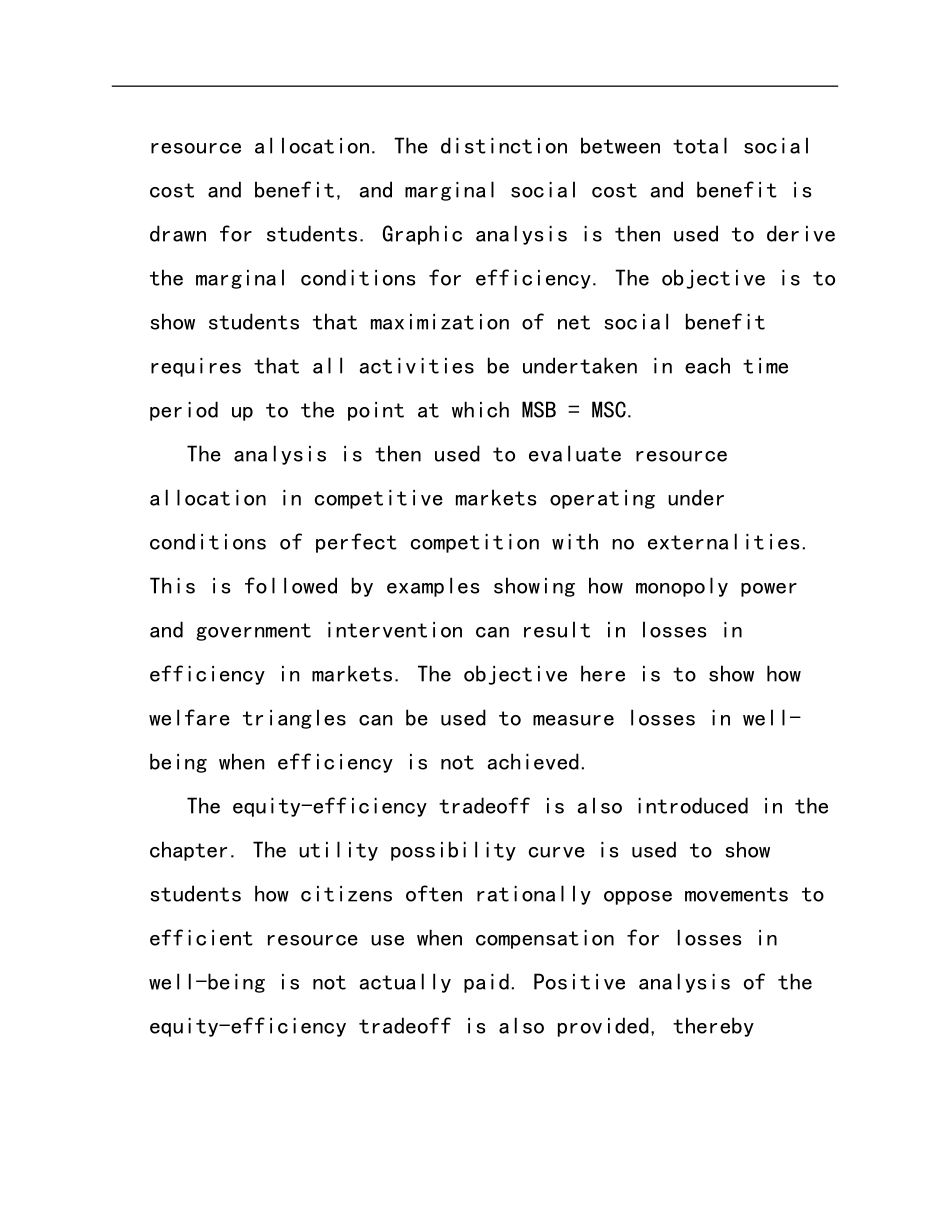CHAPTER 2Efficiency, Markets,and GovernmentINSTRUCTIONAL OBJECTIVESThe main objective of this chapter is to develop the concept of efficiency and show students how it is used to evaluate economic performance. To begin the discussion, it is necessary to draw the distinction between positive and normative economics. Both of these approaches are used in the chapter. An additional instructional objective is therefore to demonstrate the usefulness of each type of analysis.The concept of efficiency is carefully linked to resource allocation and economic transactions. The chapter also introduces the student to marginal analysis of resource allocation. The distinction between total social cost and benefit, and marginal social cost and benefit is drawn for students. Graphic analysis is then used to derive the marginal conditions for efficiency. The objective is to show students that maximization of net social benefit requires that all activities be undertaken in each time period up to the point at which MSB = MSC.The analysis is then used to evaluate resource allocation in competitive markets operating under conditions of perfect competition with no externalities. This is followed by examples showing how monopoly power and government intervention can result in losses in efficiency in markets. The objective here is to show how welfare triangles can be used to measure losses in well-being when efficiency is not achieved.The equity-efficiency tradeoff is also introduced in the chapter. The utility possibility curve is used to show students how citizens often rationally oppose movements to efficient resource use when compensation for losses in well-being is not actually paid. Positive analysis of the equity-efficiency trade...


